The humble light bulb has come a long way since Edison’s day. Here’s why smart lighting isn’t just for tech geeks anymore.
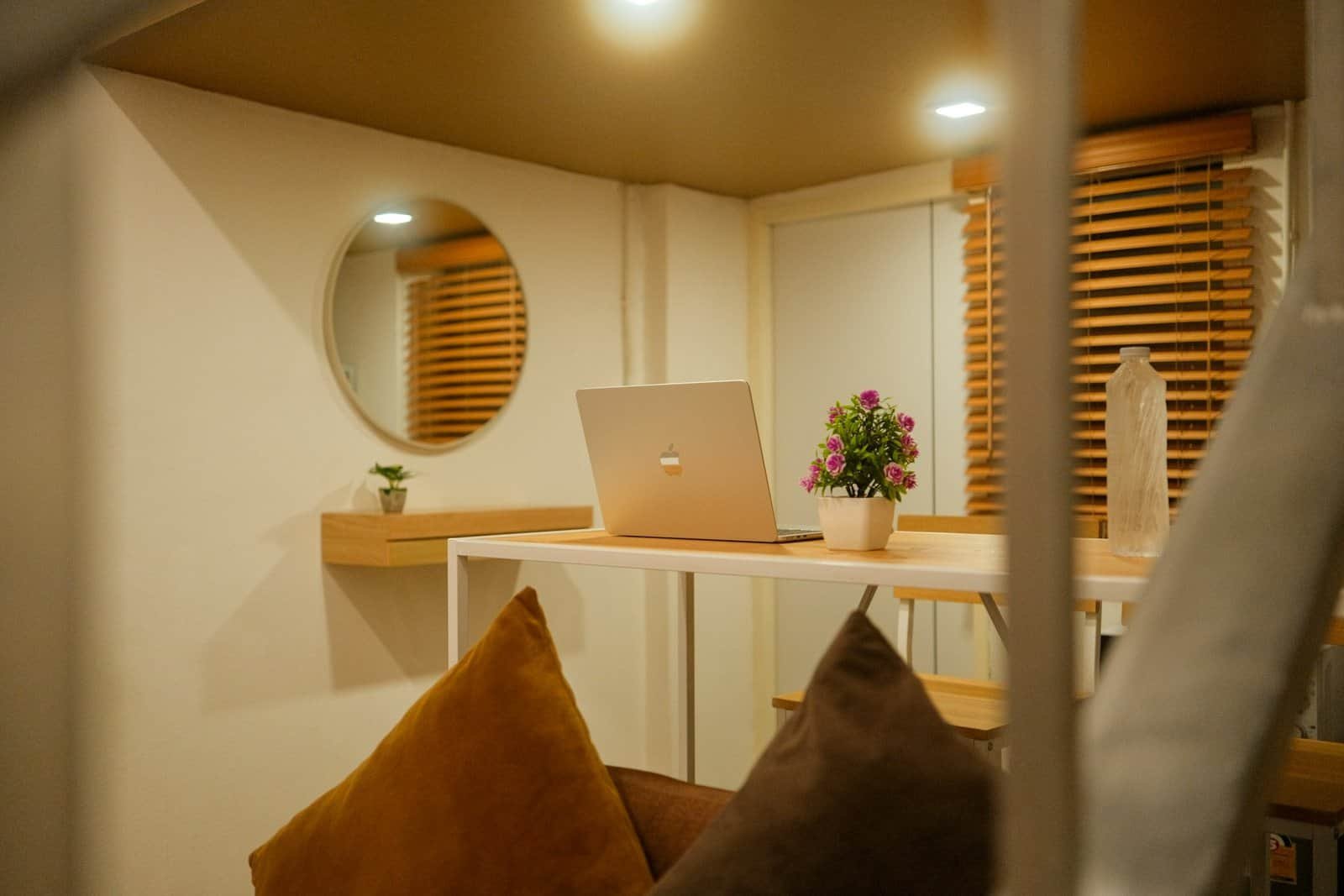
Remember when flipping a light switch was the peak of lighting technology? Those days are firmly behind us. Today’s smart lighting systems don’t just illuminate your space—they set moods, boost productivity, enhance security, and even respond to your voice commands. If you’re still living in the dark ages with conventional bulbs, it might be time for an upgrade that’s as practical as it is impressive.
I’ll be honest: the first time I installed a smart bulb, I spent an embarrassingly long time just changing colors and giggling like a kid with a new toy. But beyond the novelty factor, I quickly discovered that smart lighting was solving problems I didn’t even know I had. From automatically dimming at bedtime to flashing when my pizza delivery arrived, these little digital wonders became an essential part of my home.
Let’s illuminate why 2025 is the year you should finally make the switch to smart lighting, and explore the best options currently brightening up American homes.
Why Smart Lighting Is Having Its Moment in 2025
Smart lighting has evolved from a luxury gadget to an accessible home essential. Here’s why it deserves your attention now:
- Energy efficiency that pays for itself: Today’s smart LED bulbs use up to 90% less energy than traditional incandescents while lasting up to 25 times longer.
- Seamless integration: The latest smart lighting systems work effortlessly with virtually all smart home ecosystems, including your high-performance speakers for a complete entertainment experience.
- Affordability: Entry-level smart bulbs now start around $10-15, making them accessible to most households.
- Enhanced security: Lights that mimic your presence when you’re away are a simple but effective deterrent to potential intruders.
- Improved well-being: Color-tunable lighting can support your circadian rhythm, potentially improving sleep and daytime alertness.
If you’re still wondering whether smart lighting is worth it, consider this: Americans spend approximately 90% of their time indoors. Shouldn’t the lighting in those spaces work harder for your comfort, convenience, and wellbeing?
Top Smart Lighting Brands in 2025
When it comes to smart lighting brands, several manufacturers have distinguished themselves as industry leaders. Here’s a breakdown of the top contenders:
Philips Hue: The Gold Standard
Philips Hue remains the 6for premium smart lighting. Their ecosystem offers unparalleled compatibility, reliability, and feature depth. While slightly pricier than competitors, their products consistently deliver exceptional performance and versatility.
Standout product: The Philips Hue White and Color Ambiance Bulb works with all major smart home platforms, though it requires the Hue Bridge for full functionality.
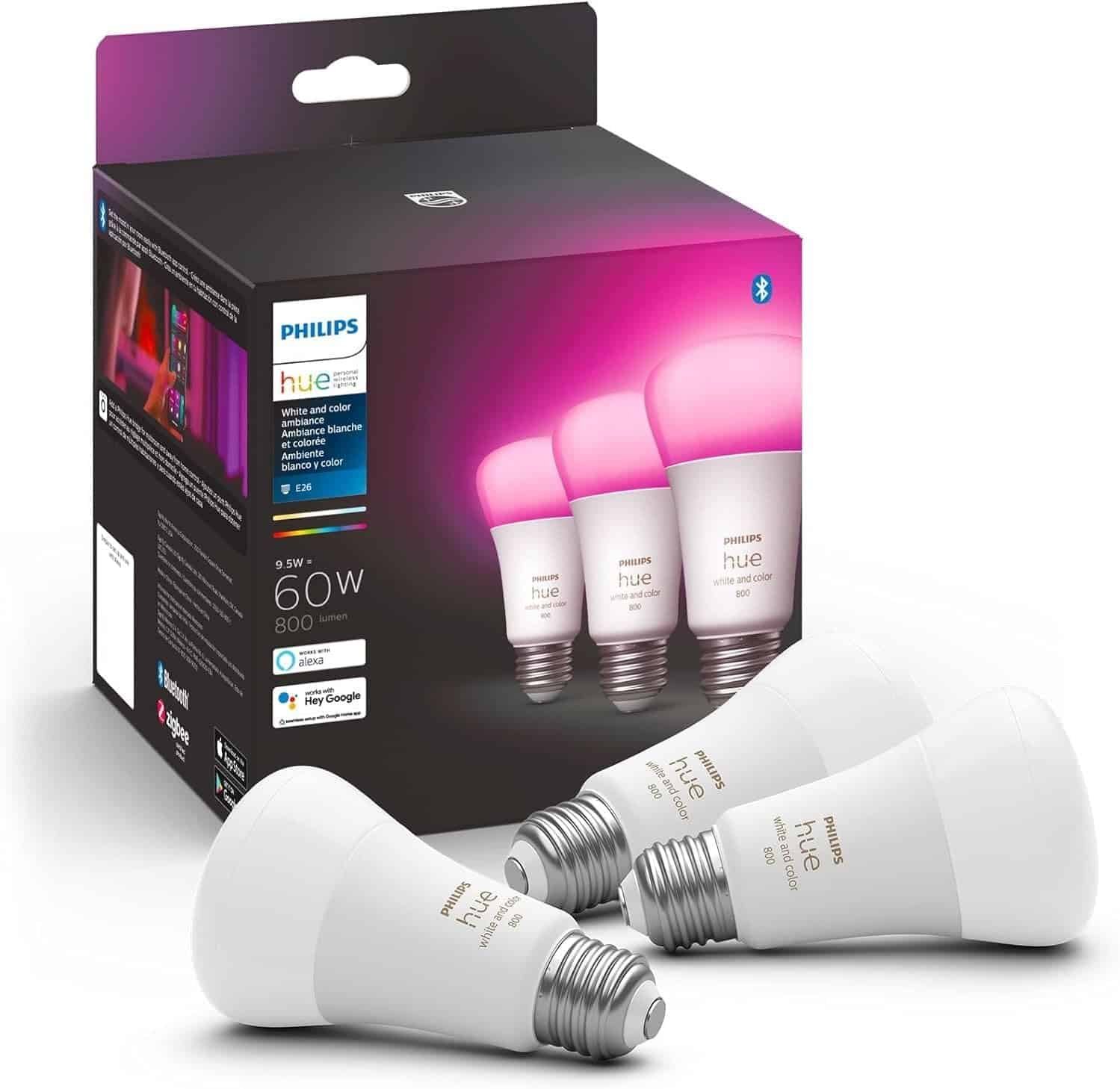
Nanoleaf: For the Design-Conscious
If you view lighting as art, Nanoleaf should be on your radar. Known for their geometric light panels that respond to touch and sound, they’ve expanded into more traditional bulbs while maintaining their design-forward approach.
Standout product: Nanoleaf Shapes Light Panels offer modular, touch-reactive light panels for dynamic wall art and ambient lighting.
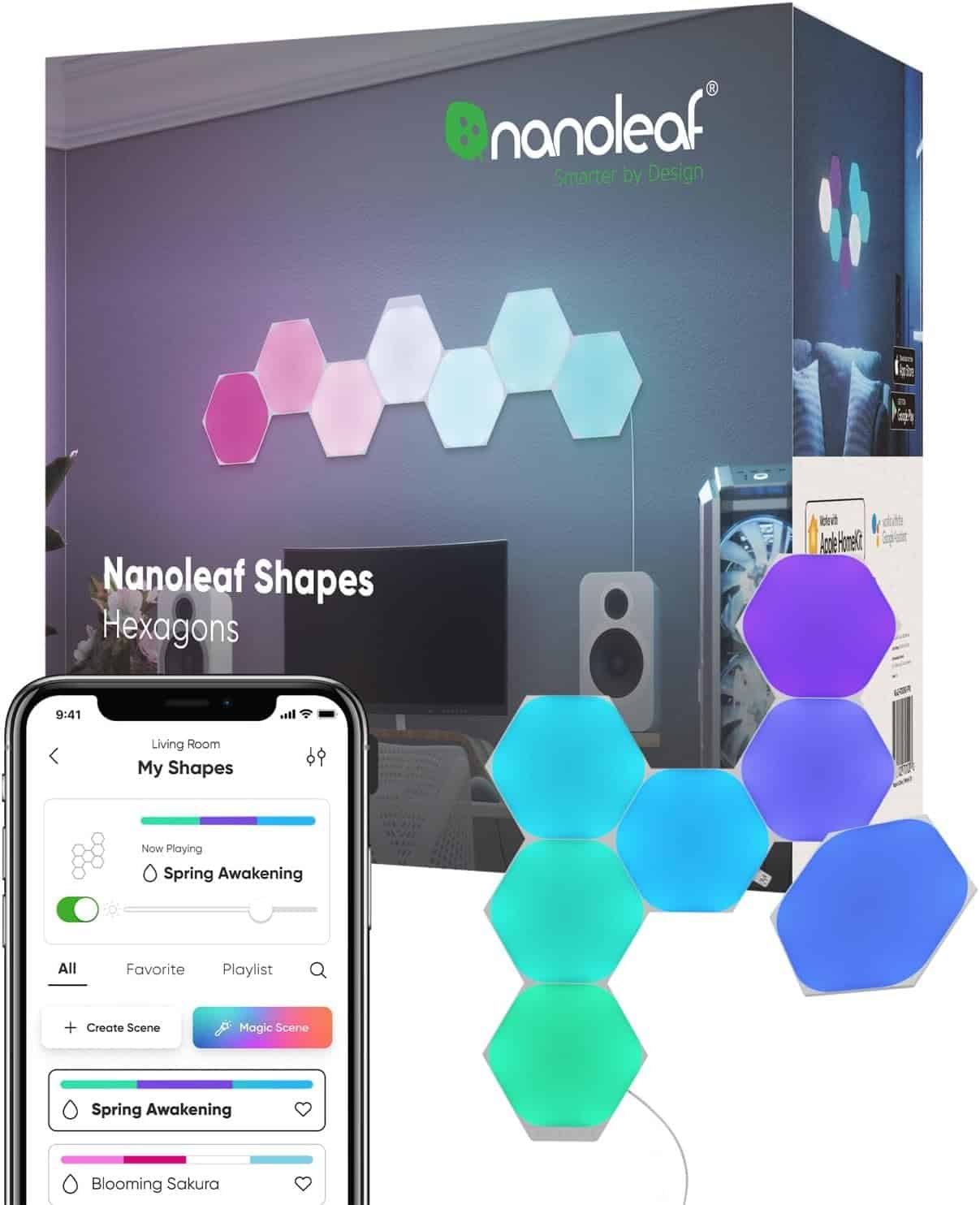
Govee: Budget-Friendly Innovation
Govee has rapidly gained market share by offering impressive features at accessible price points. Their app experience has improved dramatically in recent years, making them a strong contender for those new to smart lighting.
Standout product: Govee Wi-Fi RGBWW Smart LED Bulbs provide millions of colors and scheduling options while remaining affordable.
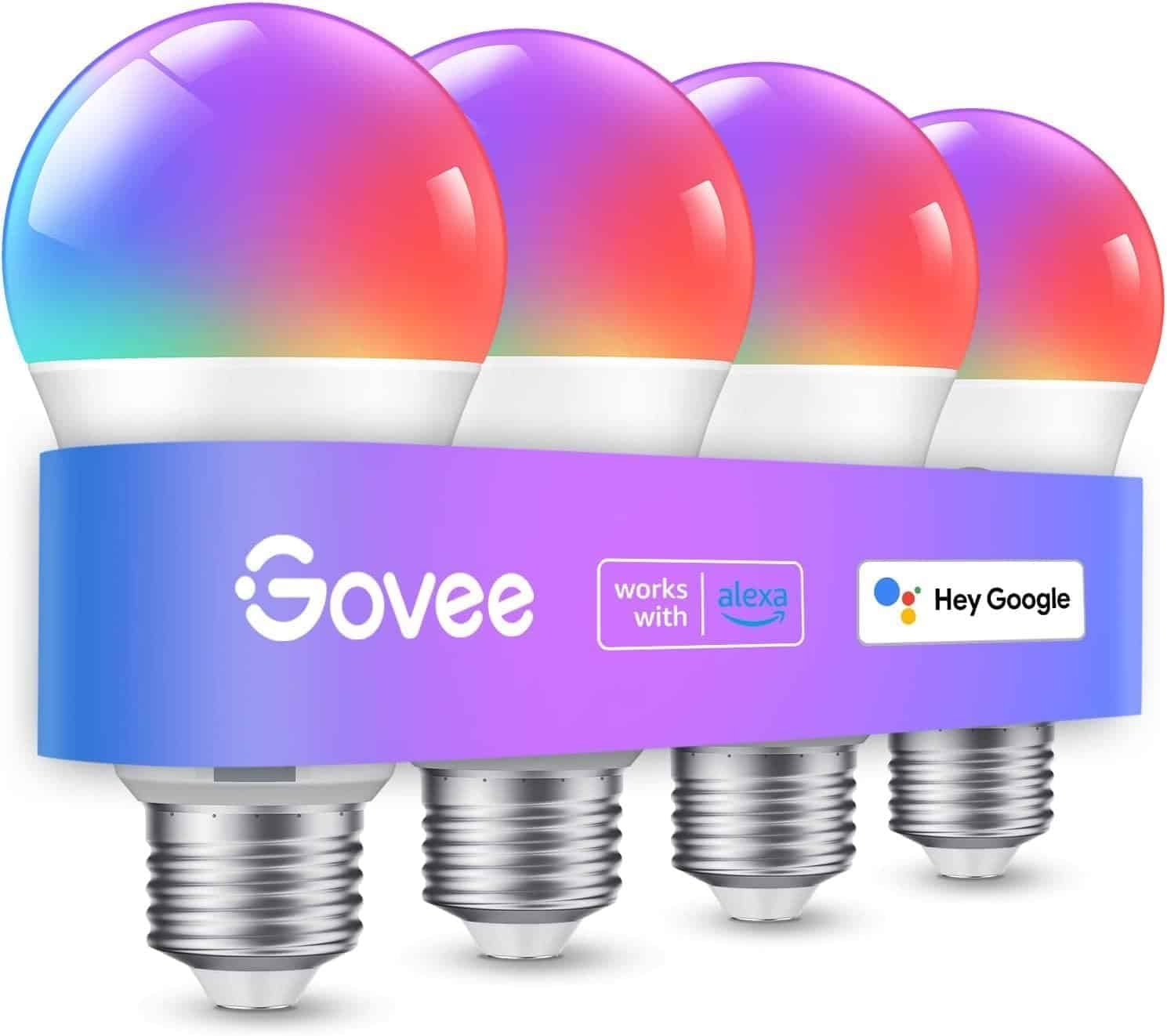
LIFX: No Hub Required
LIFX bulbs stand out for their exceptional brightness and vibrant colors. Their hub-free design means each bulb connects directly to your Wi-Fi network, simplifying setup.
Standout product: LIFX Color A19 Smart Bulb offers bright, hub-free lighting with support for Alexa, Google, and HomeKit.
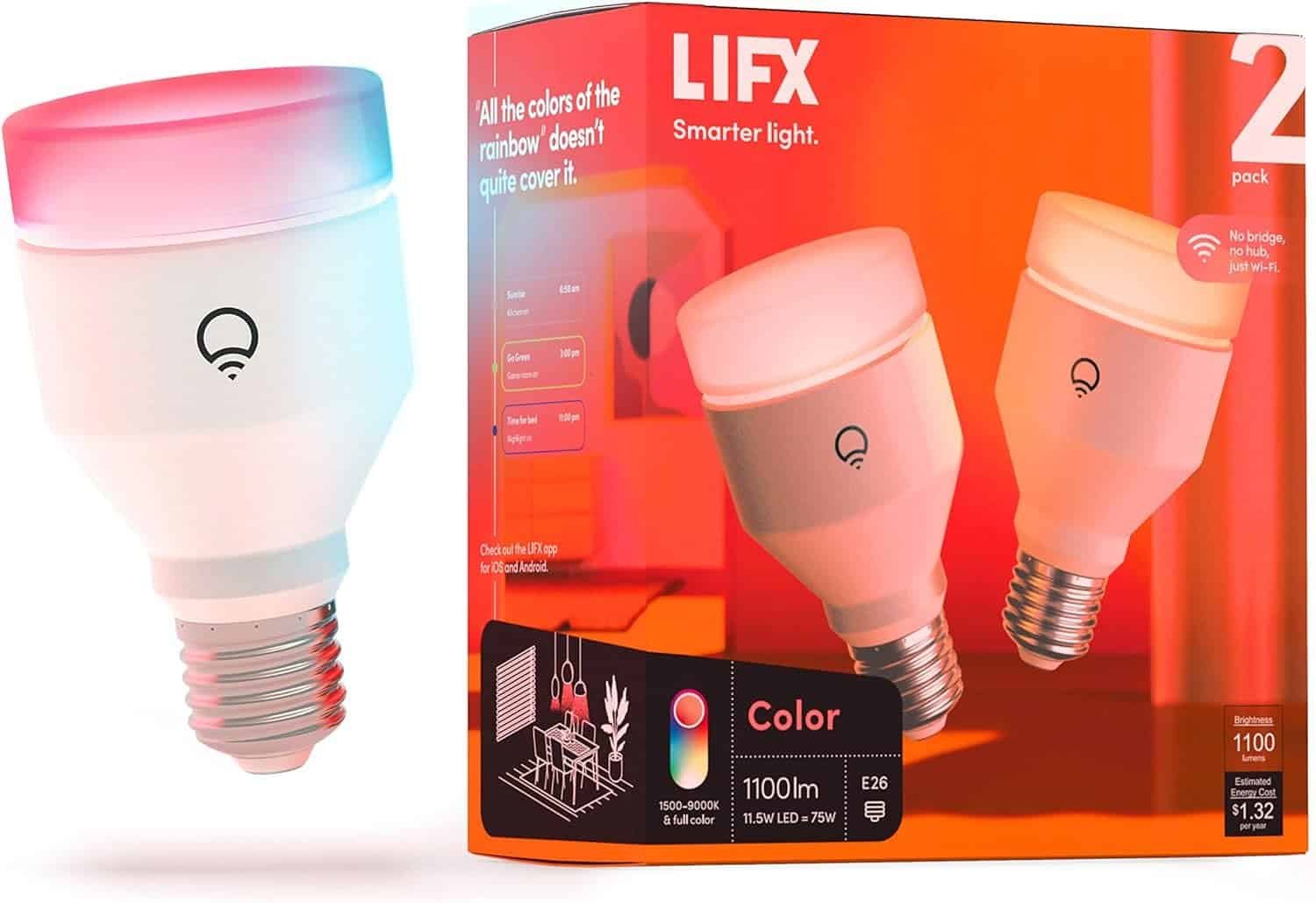
Wyze: Budget Champion
For those wanting to dip their toes into smart lighting without a significant investment, Wyze offers remarkable value. Their bulbs provide core features at a fraction of competitors’ prices.
Standout product: Wyze Bulb Color delivers 16 million colors and syncs with sunrise/sunset at a budget-friendly price point.
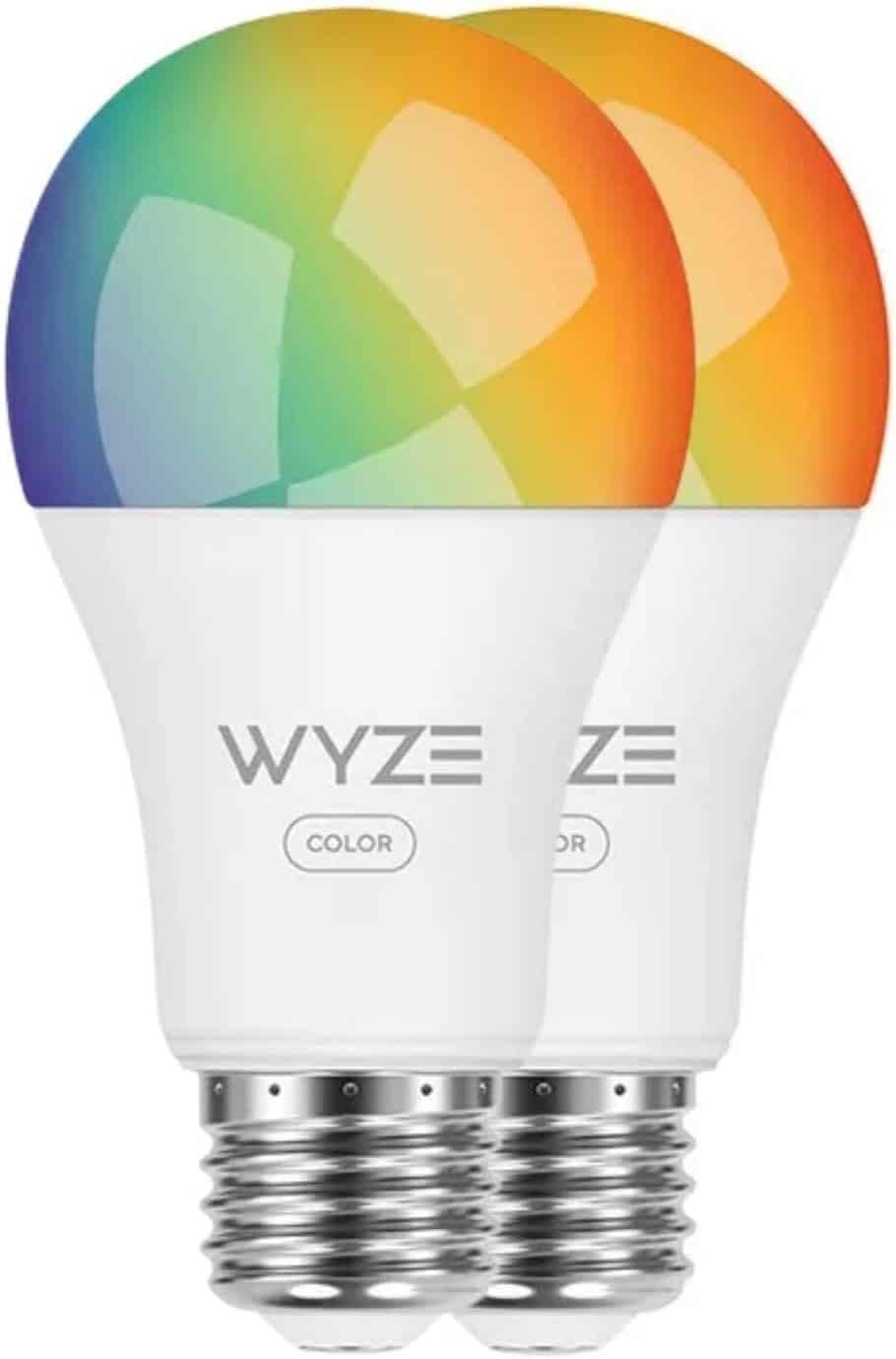
Choosing the Best Smart Light Bulbs for Your Home
Selecting the right smart light bulbs for your home depends on several factors. Here’s a straightforward guide to making the best choice:
Consider Your Existing Smart Home Ecosystem
If you already use Alexa, Google Home, or Apple HomeKit, prioritize bulbs that integrate seamlessly with your current setup. Most major brands support multiple platforms, but compatibility varies:
| Smart Home Platform | Highly Compatible Brands |
|---|---|
| Amazon Alexa | Philips Hue, LIFX, Govee, Wyze, TP-Link |
| Google Home | Philips Hue, LIFX, Nanoleaf, Govee, C by GE |
| Apple HomeKit | Philips Hue, LIFX, Nanoleaf, Meross |
| Samsung SmartThings | Philips Hue, LIFX, Sengled, WiZ |
Hub or No Hub?
Some systems require a central hub (like the Philips Hue Bridge), while others connect directly to your Wi-Fi. Hub-based systems generally offer:
- More reliable performance
- Lower latency (less delay between command and action)
- Less congestion on your Wi-Fi network
Hub-free systems provide:
- Simpler setup
- Lower initial cost
- Less hardware to maintain
“I initially avoided hub-based systems because I didn’t want another device cluttering my router area,” admits Mike, a smart home enthusiast from Portland. “But after switching to Philips Hue with a bridge, I noticed my bulbs responded much faster and more reliably.”
Special Features Worth Considering
Modern smart lighting systems offer features beyond basic color changes and dimming:
- Adaptive lighting: Automatically adjusts color temperature throughout the day to match natural light patterns
- Entertainment sync: Coordinates with music, movies, or games for immersive experiences
- Motion detection: Triggers lights when movement is detected
- Energy monitoring: Tracks power consumption for better efficiency
- Matter compatibility: Ensures future-proof interoperability with various smart home platforms
Lighting Types for Different Spaces
Different areas of your home may benefit from different types of smart lighting:
- Living rooms: Color-changing A19 bulbs or light strips behind TV
- Bedrooms: Gentle, dimmable bulbs with good warm-to-cool white range
- Home offices: Tunable white lighting that supports focus and reduces eye strain
- Kitchens: Bright, clear lighting with good color rendering
- Outdoors: Weather-resistant smart floodlights or pathway lighting
Installation: DIY or Professional Help?
One common concern is whether installing smart home lighting requires electrical expertise. The good news? Most smart lighting products are designed for simple DIY installation:
- Smart bulbs: As easy as changing a regular light bulb—simply screw in and follow the app setup instructions
- Smart switches: Typically require basic wiring knowledge and turning off circuit breakers
- Smart plugs with lamps: Plug-and-play simplicity with zero electrical work
- Light strips: Usually adhesive-backed with a simple power connection
When might you need an electrician?
- Installing new wiring for outdoor lighting
- Replacing switches in older homes with no neutral wire
- Setting up complex, whole-home systems
- Adding new fixtures or relocating existing ones
“I was nervous about setting up my first smart lighting system,” says Sarah from Chicago. “But I started with just replacing a few bulbs, and it was literally as easy as screwing in a light bulb and downloading an app. No electrician needed!”
Smart Lighting Compatibility: What Works with What?
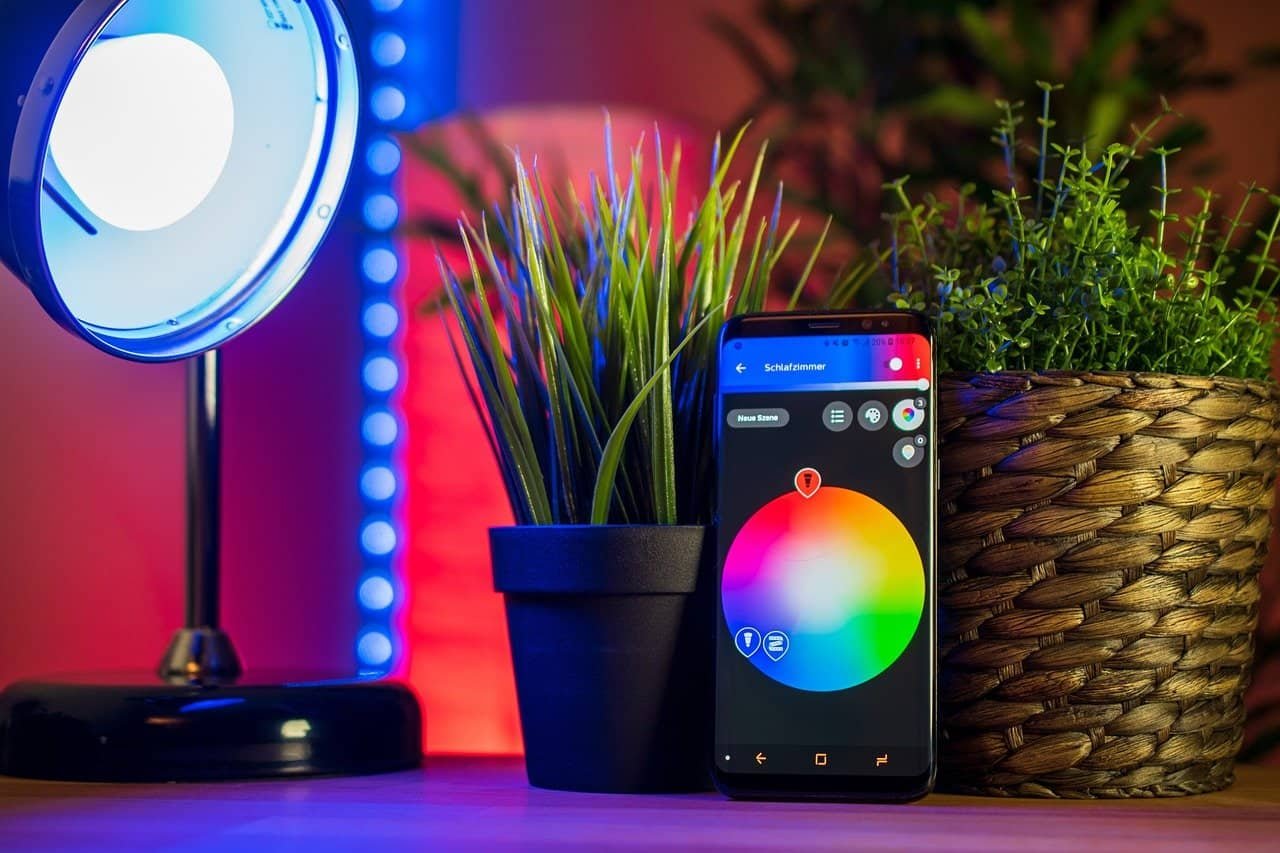
One of the most common questions about smart lighting compatibility is whether these systems work with popular voice assistants. The answer is a resounding yes—most major smart lighting brands work with Alexa, Google Assistant, and Siri.
However, compatibility extends beyond just voice control. Here’s a breakdown of what to expect:
Amazon Alexa
Amazon’s voice assistant offers extensive smart lighting support, including:
- Grouping lights by room
- Creating routines that trigger multiple actions
- Changing colors and brightness levels
- Setting timers and schedules
Best options for Alexa: Philips Hue, LIFX, Govee, TP-Link Kasa
Google Home/Assistant
Google’s ecosystem provides similar capabilities to Alexa, with particularly strong:
- Natural language processing for lighting commands
- Integration with other Google services
- Multi-user voice recognition
- Broadcast features that can include lighting effects
Best options for Google Home: Philips Hue, LIFX, Nanoleaf, C by GE
Apple HomeKit
Apple’s smart home platform emphasizes security and privacy, offering:
- End-to-end encryption
- Local processing of many commands
- Elegant automation setup
- Integration with Apple devices via the Home app
Best options for Apple HomeKit: Philips Hue, LIFX, Nanoleaf, Meross
The Promise of Matter
The introduction of the Matter protocol is gradually solving compatibility issues. Devices with Matter certification work across major ecosystems, potentially eliminating the need to choose sides in the platform wars.
Matter-compatible options: Nanoleaf Essentials, AiDot Linkind, and increasingly more brands are adding support
Energy Efficiency: Do Smart Lights Actually Save Money?
Smart lighting’s efficiency comes from three key factors:
- LED technology: Most smart bulbs are LED-based, using a fraction of the electricity of incandescent bulbs
- Dimming capabilities: Using lights at lower brightness levels reduces power consumption
- Scheduling and automation: Lights that automatically turn off when not needed eliminate waste
A typical LED smart bulb uses 9-12 watts compared to a 60-watt incandescent bulb. Over the 15,000-25,000 hour lifespan of the LED, this difference adds up significantly.
Consider this comparison for a household with 20 bulbs:
| Bulb Type | Energy Use | Lifespan | Cost for 20 Bulbs Over 10 Years* |
|---|---|---|---|
| Incandescent | 60W | 1,000 hours | $2,400 |
| Standard LED | 10W | 15,000 hours | $480 |
| Smart LED | 10W | 20,000 hours | $520** |
*Assuming $0.15/kWh and average use of 4 hours/day **Includes slightly higher purchase price but accounts for energy savings through automation
While smart bulbs cost more upfront, their efficiency and lifespan often make them more economical in the long run, especially when automation features are utilized to reduce unnecessary usage.
Advanced Features Worth the Upgrade
Modern smart lighting systems offer capabilities that transform them from simple illumination into home enhancement tools:
Color-Changing Capabilities
Beyond novelty value, color-changing smart lights offer practical benefits:
- Creating different moods for various activities
- Supporting better sleep with warmer tones in the evening
- Enhancing entertainment experiences
- Providing visual notifications (turning red when your security system detects motion, for example)
Scheduling and Automation
With smart lighting, you can:
- Create wake-up routines that gradually brighten your bedroom
- Program lights to turn on at sunset and off at bedtime
- Set vacation modes that mimic occupancy
- Trigger lighting changes based on motion sensors or door openings
Remote Control When Away from Home
Modern smart lighting setup lets you control your lights from anywhere with internet access. This enables:
- Checking whether you left lights on and turning them off remotely
- Making your home look occupied while you’re away
- Turning on lights before you arrive home
- Adjusting lighting for pet comfort during your absence
“I was halfway to the airport when I realized I’d left every light in the house on,” recalls Tom from Austin. “Being able to turn them all off with a few taps on my phone saved me from a bloated electricity bill after my two-week vacation.”
The Best Smart Lighting for Specific Spaces
Different areas in your home have unique lighting needs. Here are recommendations for specific spaces:
Living Room Lighting
The central gathering space benefits from layered lighting:
- Ambient: Philips Hue White and Color Ambiance Bulbs in ceiling fixtures
- Accent: LIFX Z LED Light Strips behind entertainment centers
- Task: Govee Floor Lamps near reading areas
Bedroom Lighting
For restful sleep and gentle mornings:
- Nanoleaf Essentials A19 Smart Bulbs with circadian rhythm support
- Philips Hue Lightstrip Plus under the bed for subtle night lighting
- WiZ Sleep Mode bulbs that reduce blue light before bedtime
Home Office Lighting
For productivity and video call clarity:
- GE Cync Smart LED Light Bulbs with tunable white for focus
- Govee Light Bars for balanced background lighting on video calls
- U-tec Bright bulbs for maximum brightness during daytime work
For the complete home office setup, don’t forget to pair your smart lighting with an ergonomic gaming mouse and a high-quality monitor to reduce eye strain during long work sessions.
Outdoor Spaces
Weather-resistant options for safety and ambiance:
- Philips Hue Outdoor Floodlights for security
- LIFX Outdoor Smart Lights for pathway illumination
- Govee Outdoor String Lights for entertainment areas
Troubleshooting Common Smart Lighting Issues
Even the best technology occasionally needs some help. Here are solutions to common problems:
Connectivity Problems
If your lights stop responding:
- Check that your Wi-Fi is working properly
- Ensure the bulbs aren’t too far from your router or hub
- Verify that the bulbs’ firmware is up to date
- Try resetting the problematic bulb following manufacturer instructions
“After pulling my hair out over a bulb that kept disconnecting, I discovered it was just too far from my router,” says Jamie from Denver. “Adding a simple Wi-Fi extender solved the problem instantly.”
Compatibility Conflicts
When lights don’t work with your preferred ecosystem:
- Check if the manufacturer offers a bridge or hub solution
- Look for third-party integration services like IFTTT
- Consider upgrading to Matter-compatible devices
- Ensure your smart home hub firmware is current
Security Concerns
To keep your smart lighting system secure:
- Always update firmware when available
- Use strong, unique passwords for associated accounts
- Enable two-factor authentication when offered
- Place hubs and bridges on guest networks when possible
Mixing and Matching: Can Different Brands Work Together?

Can you combine Philips Hue, LIFX, and Nanoleaf in one home? The answer is increasingly “yes,” with some caveats.
Platform Unification
The easiest way to mix brands is through a unified control platform:
- Amazon Alexa
- Google Home
- Apple HomeKit
- Samsung SmartThings
These platforms allow control of multiple brands through a single app or voice command, though some advanced features may remain exclusive to the manufacturer’s native app.
The Matter Protocol Game-Changer
Matter, the new smart home standard backed by Apple, Amazon, Google, and others, is making cross-brand compatibility much smoother. Devices with Matter certification can communicate directly with each other regardless of brand.
Tips for Successful Multi-Brand Setups
If you’re mixing smart lighting brands:
- Group similar brands by room for consistent response times
- Use manufacturer apps for setup, then control via your preferred platform
- Keep firmware updated across all devices
- Consider a hub like Hubitat or Home Assistant for more complex integrations
Smart Lighting: Investment vs. Value
Is smart lighting worth the investment? Let’s break down the value proposition:
Initial Investment
A starter setup might include:
- 4 color smart bulbs for living spaces: $120-200
- Hub or bridge (if required): $50-60
- 2 smart light strips: $80-150
- Optional smart switches: $30-50 each
For a basic setup, expect to invest $250-500 depending on brand and features.
Long-Term Value
This investment delivers:
- Potential energy savings of $100+ annually compared to incandescent bulbs
- Convenience value of automation and remote control
- Enhanced home security through presence simulation
- Wellness benefits from circadian lighting
- Increased home value and appeal for tech-savvy buyers
Starting Small: Budget-Friendly Options
Not ready for a whole-home system? Start with:
- A single Wyze Color Bulb ($15) for your most-used lamp
- Govee light strips ($25-30) for immediate impact in entertainment areas
- TP-Link Kasa smart bulbs ($13-18 each) for room-by-room upgrades
Conclusion: Lighting the Way Forward
Smart lighting has evolved from a novelty to a practical home upgrade that combines convenience, efficiency, and ambiance. Whether you’re looking to save energy, enhance security, or simply enjoy the ability to set the perfect mood without leaving your couch, today’s smart lighting options offer compelling solutions at increasingly accessible price points.
As we move through 2025, the integration of Matter and other cross-platform standards continues to make smart lighting more user-friendly and less fragmented. There’s never been a better time to make the switch from conventional bulbs to intelligent lighting that adapts to your lifestyle.
Ready to upgrade your home’s IQ? Start with a single room, learn the ropes, and watch as the benefits illuminate more than just your living space—they’ll brighten your daily routine in ways you might not expect.
Call to Action
Have you made the switch to smart lighting? Share your experience in the comments below! And if you’re ready to take the plunge, check out our detailed reviews of each product mentioned in this article.

[…] open the door to an unexpected visitor? Those days are long gone. Just like we’ve seen revolutionary changes in home lighting technology The humble doorbell has undergone a serious tech […]